This content is associated with The Open University's Language courses and qualifications.
The basic principle
You start by writing down lists of phrases you want to learn. Then you wait for at least two weeks to find out that you almost miraculously remembered 30% of the expressions from each list—long-term! Sounds incredible, right? Try it out for yourself. Here is a quick manual:
1. Dividing into four - A, B, C and D
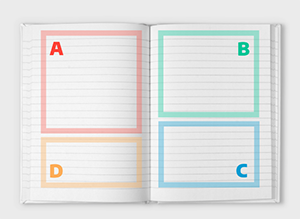
Open your notebook to the first double-page spread. Let’s divide it into four sections: A, B, C, and D in a clockwise direction, starting at the top of the left page. In section A, write down today’s date followed by a list of 20 phrases you want to learn in one column and their translations in a second column, each phrase on a new line. This is called a “headlist.” Read every new phrase and its translation out loud slowly. Don’t try to memorise or remember anything, just enjoy writing out interesting words.
2. Daily headlist
Create a new headlist every day for the next 13 days only in section A of each new double-page spread. Don’t look at any of the older lists during these two weeks.
3. Test yourself
Day 15: come back to the first headlist. Test yourself on how well you remember the phrases by covering up the column in your target language. You’ll be surprised to see that you remember about 30% of the expressions (6 out of 20)
4. Copy any incorrect answers
Copy the 14 phrases that you didn’t remember and their translations into section B on the opposite page. Remember to write down the date. That’s the first distillation. You won’t see these phrases for another two weeks.
5. Repeat yourself
Repeat steps 3 and 4 for the second, third, and all other headlists, always making sure there are at least two weeks between rewriting the forgotten phrases from section A to section B.
6. Test again
Day 29: come back to the first double-page spread and test yourself on the 14 phrases in section B. Again, you’ll have remembered about 30%. Copy the rest (10 words) in section C below and include the date. Read them aloud, and that’s it. You just made the 2nd distillation!
7. Rinse and repeat every day
Repeat this process every day with all sections: keep writing new headlists (section A) and test yourself on previous headlists and distilled lists in all sections, always at least 14 days after you wrote them. That’s why it’s important to date each list.
How it works
Thousands of people swear the goldlist method and use it happily every day. The author of the method is David James, a polyglot who created the method based on how our brains remember new information: as long as they receive it in a relaxed state, they will naturally pick a few items that will be stored in long-term memory. You can’t influence which words the brain picks but you can make sure your brain is exposed to new vocabulary regularly so that it remembers words naturally. And those that it doesn’t will simply be repeated until it does.
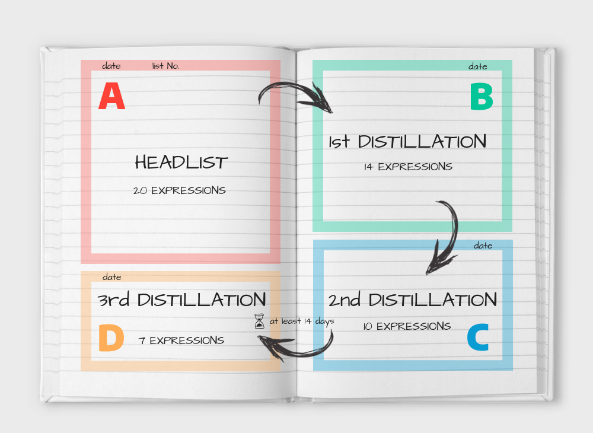
The Goldlist method is very simple and effective. If you’d like to know more details about the method and get tips from a goldlisting pro, get a free detailed ebook called Goldlist Method In a Nutshell at www.languagementoring.com/goldlist.
 About the author: Lýdia Machová, PhD, is a polyglot, language mentor, and TED speaker who helps others learn languages by themselves.
About the author: Lýdia Machová, PhD, is a polyglot, language mentor, and TED speaker who helps others learn languages by themselves.
She usually learns a new language every two years using methods such as the Goldlist method, and to date, she speaks 7 fluently.
You can listen to Lýdia’s TED talk, The Secrets of Learning a new Language, by clicking here.




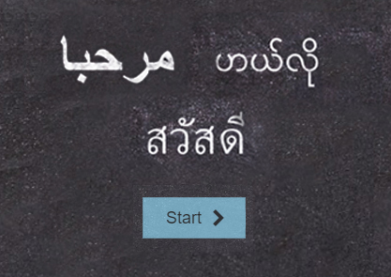


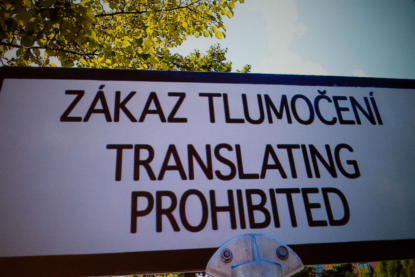
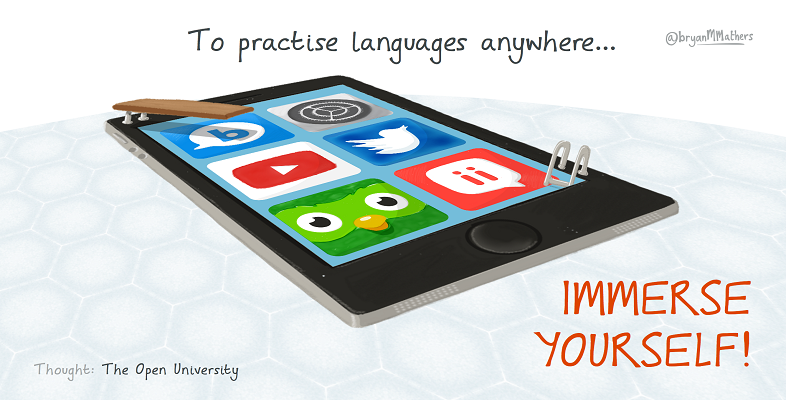

Rate and Review
Rate this article
Review this article
Log into OpenLearn to leave reviews and join in the conversation.
Article reviews
Getting a clear and consistent message to all different groups of people and individual across regions and communities is, however, a complex operation that requires the use of a wide range of media, including social media messaging, billboards, letters, postcards, and phone calls to ensure everyone is included in the communications. A key part in this process of dissemination is to ensure the message is accessible by different people and communities and that it is available in the multiple languages used in communities. Organisations like HealthWatch are vital in this process, supporting local communities and individuals navigate the mass of information, while also listening to health service users’ experiences and advocating for their needs.
In a digital era, social media is proving instrumental in getting the message across. From hashtag campaigns to regular COVID-19 tweets and Facebook posts from official UK authorities accounts, which provide information and advice from the Minister, First Ministers, NHS and public health authorities across UK, social media platforms are used as hubs for dissemination and sharing. Influencers and public figures are also helping to spread the message via their personal profile accounts in a bid to reach younger audiences.